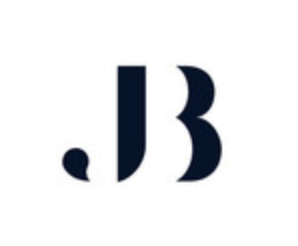Written by Jorine Bibi
With people and companies around the world growing steadily more conscious of the need to conserve energy and protect our environment, ISO certifications are becoming all the more relevant. With this in mind, let’s take a fresh look at the ISO 50001 standard, and how companies today can address energy management and the benefits of pursuing certification.
ISO 50001 is an international standard that sets forth requirements companies need to meet in order to establish effective energy management systems (or EnMS). Effective EnMS under ISO 50001 entails meeting expectations with regard to energy performance, energy efficiency, and reduced environmental impact — all of which can be brought about in a variety of ways, depending on a company’s functions and practices.
In other words, while ISO 50001 outlines general ways for companies to achieve meaningful progress, different companies can set different specific goals for their system, its success rate and scope.
To offer a glimpse of how companies can go about the process, here are a few steps that can help to spark progress toward measurably improved EnMS.
Establishing Energy Data Transparency
It is important to track and analyze energy data to reliably report and measure success and failure. A company hoping to demonstrate meaningful progress toward improved EnMS will need to establish greater transparency regarding its energy consumption, use, and change. This way, the company can not only offer a clear picture of its energy management but also conduct the analysis necessary to identify potential areas of improvement. You can’t effectively know if a change was successful if you don’t have accurate measurements to prove otherwise.
Improving Electrical Efficiency
Before looking to bigger and bolder technologies or methods, companies can also address energy performance on a more granular level, by assessing any relevant electrical functions. In today’s highly capable electronic devices, more is demanded of the printed circuit boards that actually communicate electrical signals. This demand can sometimes lead to lost or incomplete signals, which can result in a sort of hidden energy waste. It’s for this reason that more advanced PCBs can now be designed with impedance calculators that effectively ensure reliable connections and smooth signals. Transitioning to electronics using more reliable PCBs can be a means for a company to revamp its electronic functions in a way that moves in the direction of greater energy efficiency. It’s not just your lightbulbs that can be updated to be more efficient, take a look at all your technology and see where improvements can be made, the timeline needed for these changes, and measure these changes inefficiencies for evidence for your ISO 50001 certification audits.
Adjusting Spending Priorities
To some extent, the idea of adjusting spending priorities is present in all other relevant suggestions. Companies may have to spend on ways to establish energy data transparency, as well as on assessing and replacing electronics, for example. It’s worthwhile to consider this as a specific step toward better EnMS. Energy management can save a company money, but the process of establishing new processes and obtaining more efficient technology can require some adjustment of company’s spending priorities, however, demonstrating that adjustment will prove to your auditor of your commitment and continual improvement which will help in achieving ISO 50001 certification.
Seeking Out Energy-Efficient Tech
We discussed addressing energy management on a granular level, through internal electrical designs. However, companies striving for meaningful change in these areas should also seek to identify bigger changes they can make in favor of energy-efficient technology. One way to do this can be to look to clean-tech companies and the products and services they provide. For instance, a company conducting this sort of search might be inspired to install solar panels or implement water-waste monitors at office locations. This can make for a good general start, though it’s also wise for companies working on energy efficiency to find ways to improve that specifically relate to their primary functions as well – look internally at where there are opportunities and risks that can be a chance for real change!
Any company can achieve ISO 50001 certification. Through establishing clear progress toward better energy management and efficiency, companies can prove to stakeholders, the community, new customers, and current customers of their commitment to a better tomorrow.
About The Author
 Jorine Bibi is an environmental blogger. She hopes that her articles provide her readers with information on what the world can do to reduce its energy use. She also believes that if we don’t address the issue of climate change soon it will be too late. In her free time, she likes to tend to her garden.
Jorine Bibi is an environmental blogger. She hopes that her articles provide her readers with information on what the world can do to reduce its energy use. She also believes that if we don’t address the issue of climate change soon it will be too late. In her free time, she likes to tend to her garden.


